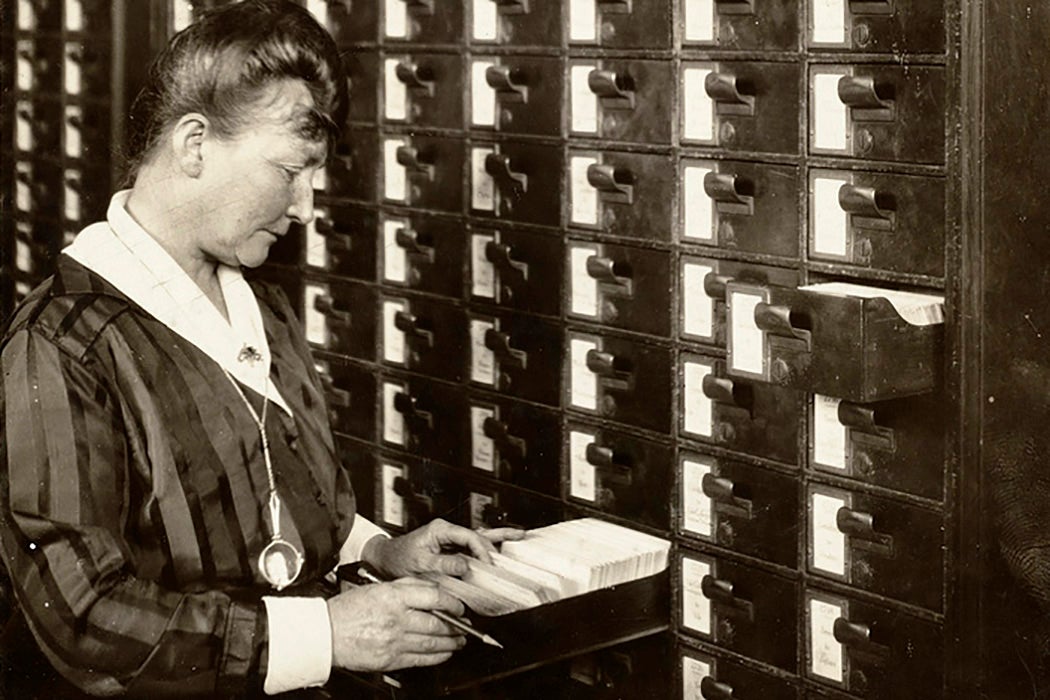Quick, think of a job that’s hard on your health. Librarian Rosalee McReynolds writes that in the late nineteenth century, a common response might have been: librarian.
As the nation urbanized in the second half of the century, McReynolds writes, upper- and middle-class men increasingly moved to commercial work. Their wives, meanwhile, remained in households that were becoming sites of consumption rather than production. Ready-made goods, and servants, turned female idleness into a status symbol. “Ironically, while a man was judged positively for hard work, he gained further status in accordance with the leisure enjoyed by his womenfolk,” McReynolds writes.
In this context, even physical inability to work—due to nervous disorders or amorphous female complaints—became glamorous. As McReynolds puts it: “Nerves became synonymous with the pampered woman and the popular image of her became that of the exhausted beauty prostrate on her chaise longue.”
But even among the privileged classes, not all women had the option to stay idle. By 1860, demographic shifts had created a serious gender imbalance in the population of the northeast, particularly in urban areas. That meant some women didn’t get married, and many among that group didn’t have family money to last them a lifetime.
For many women in this situation, becoming a librarian seemed like an obvious choice. Library administrators were enthusiastic about the cheap, educated workforce they could find among graduates of women’s colleges, and it was a ladylike form of paid employment involving little physical strain. Yet, to many Victorians, it still seemed to be too much for delicate women. As women were increasingly entering the profession in 1886, Melvil Dewey, of Dewey Decimal System fame, predicted that female librarians would have trouble doing the job because of poor health.
Want more stories like this one?
And, in fact, a number of female librarians did experience breakdowns, requesting long leaves of absence to recover. In 1900, the Brooklyn Public Library Association proposed “to build a seaside rest home for those who had broken down in library service,” McReynolds writes. One speaker at the American Library Association’s 1910 conference claimed he knew fifty librarians who had become incapacitated by the work, including some who died before their time.
We shouldn’t jump to the conclusion that these breakdowns weren’t “real,” McReynolds writes. Some social historians believe Victorian women reacted physically to their narrowly defined social roles in ways that manifested as physical and emotional breakdowns.
McReynolds notes that nervous disorders never struck more than a small minority of librarians. Nonetheless, the general impression of women’s capacities affected women’s opportunities at the nation’s libraries. The belief that long hours or excessive intellectual stimulation could make women sick presumably led some women to avoid seeking additional responsibilities. In other cases supervisors—both male and female—held them back for the sake of their health.
By the 1920s, nervous disorders were waning as psychiatrists developed more specific diagnoses. Meanwhile, the dangers of library work disappeared from public discussion as increasing numbers of middle-class women proved their competence.







